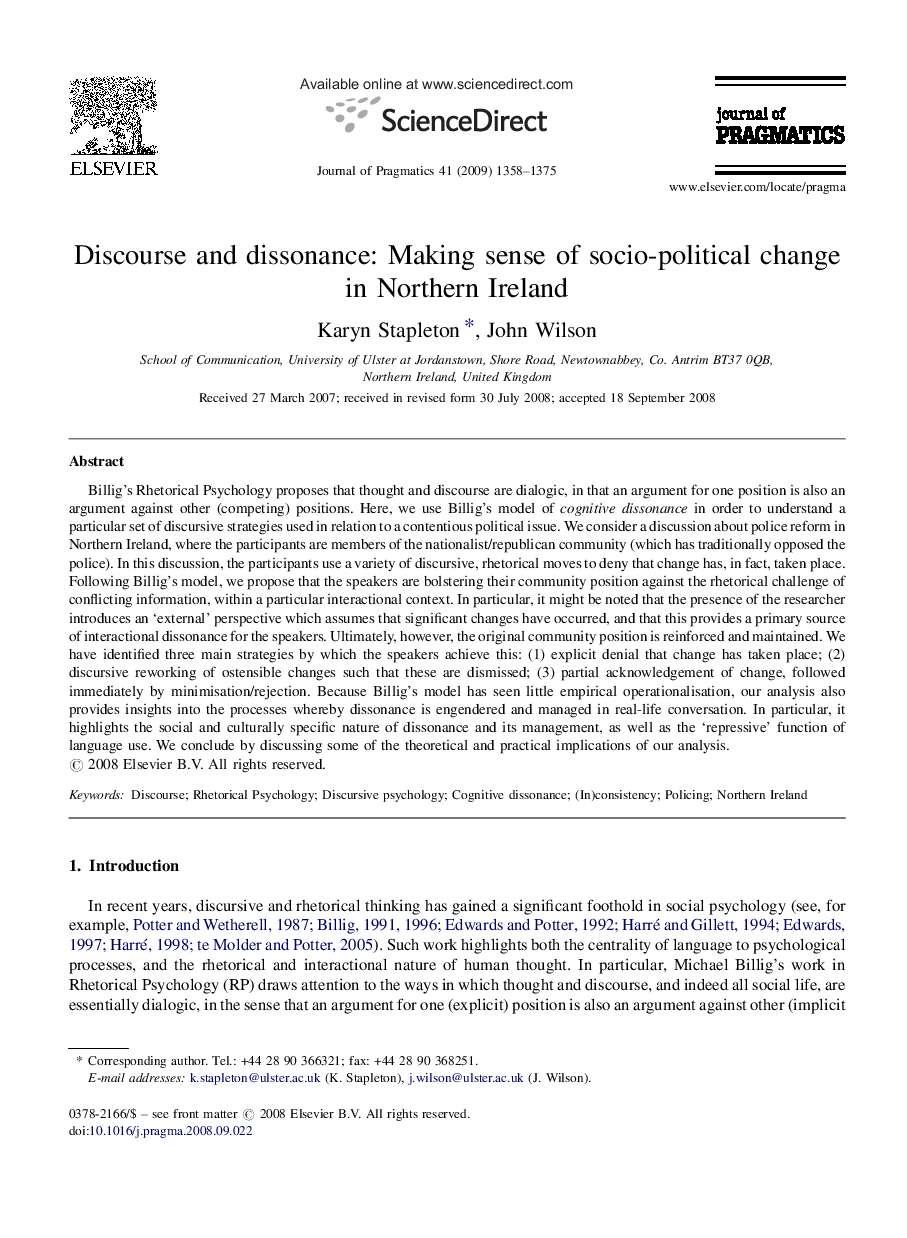| کد مقاله | کد نشریه | سال انتشار | مقاله انگلیسی | نسخه تمام متن |
|---|---|---|---|---|
| 933932 | 923375 | 2009 | 18 صفحه PDF | دانلود رایگان |

Billig's Rhetorical Psychology proposes that thought and discourse are dialogic, in that an argument for one position is also an argument against other (competing) positions. Here, we use Billig's model of cognitive dissonance in order to understand a particular set of discursive strategies used in relation to a contentious political issue. We consider a discussion about police reform in Northern Ireland, where the participants are members of the nationalist/republican community (which has traditionally opposed the police). In this discussion, the participants use a variety of discursive, rhetorical moves to deny that change has, in fact, taken place. Following Billig's model, we propose that the speakers are bolstering their community position against the rhetorical challenge of conflicting information, within a particular interactional context. In particular, it might be noted that the presence of the researcher introduces an ‘external’ perspective which assumes that significant changes have occurred, and that this provides a primary source of interactional dissonance for the speakers. Ultimately, however, the original community position is reinforced and maintained. We have identified three main strategies by which the speakers achieve this: (1) explicit denial that change has taken place; (2) discursive reworking of ostensible changes such that these are dismissed; (3) partial acknowledgement of change, followed immediately by minimisation/rejection. Because Billig's model has seen little empirical operationalisation, our analysis also provides insights into the processes whereby dissonance is engendered and managed in real-life conversation. In particular, it highlights the social and culturally specific nature of dissonance and its management, as well as the ‘repressive’ function of language use. We conclude by discussing some of the theoretical and practical implications of our analysis.
Journal: Journal of Pragmatics - Volume 41, Issue 7, July 2009, Pages 1358-1375